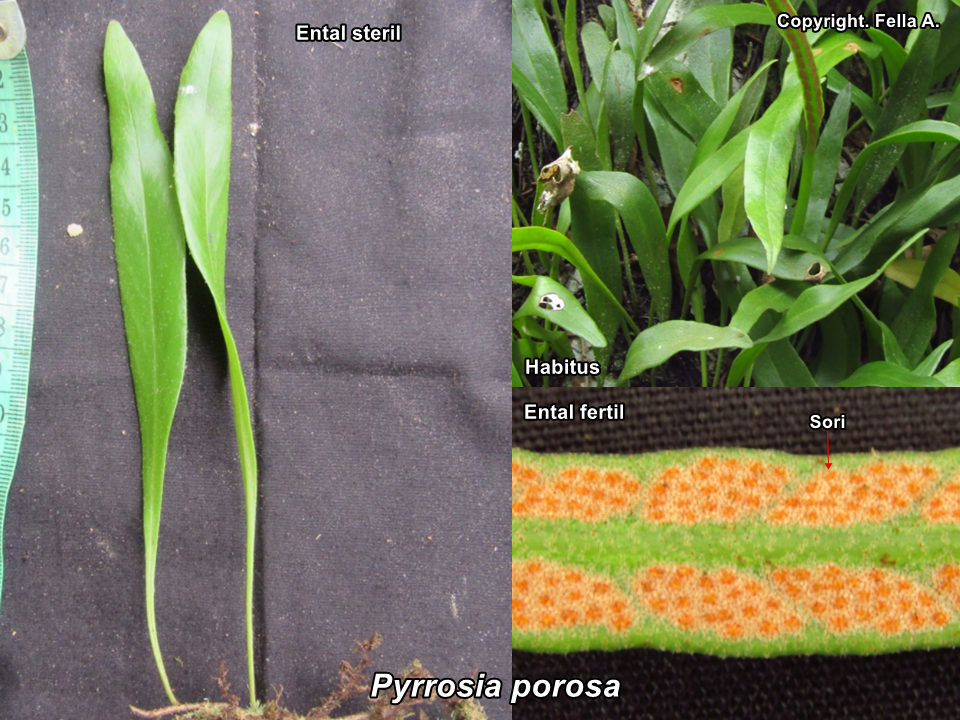Pyrrosia porosa
(C.Presl) Hovenkamp
Polypodiaceae
Nama : –
Deskripsi : Epifit, jarang litofit. Rimpang panjang, melekat pada kulit batang pohon inang, bercabang-cabang, rimbun, ramping, kehitaman, berakar perekat yang kokoh. Ental holodimorfik; helaian daun steril melanset, mengutuh, pertulangan menyirip, agak menjangat, kehijauan, ujung lancip sampai meruncing; helaian fertil, memita, menjangat, panjang 15−20 cm, tepi mengutuh, ujung melancip, permukaan atas kehijauan. Sorus bulat, sori tersusun rapat di permukaan bawah helaian fertil, tersusun dengan pola diamond mengikuti pertulangan lateral, 17−18 sorus dalam satu pola, kecoklatan muda.
Ekologi : Persebaran alami dari wilayah India sampai Taiwan dan Indo-Cina sampai Malesia. Pada umumnya tumbuh epifit pada batang, dahan, dan percabangan pohon inang atau epifit pada bebatuan. Referensi: Piggott, 1996.
Kegunaan : –

